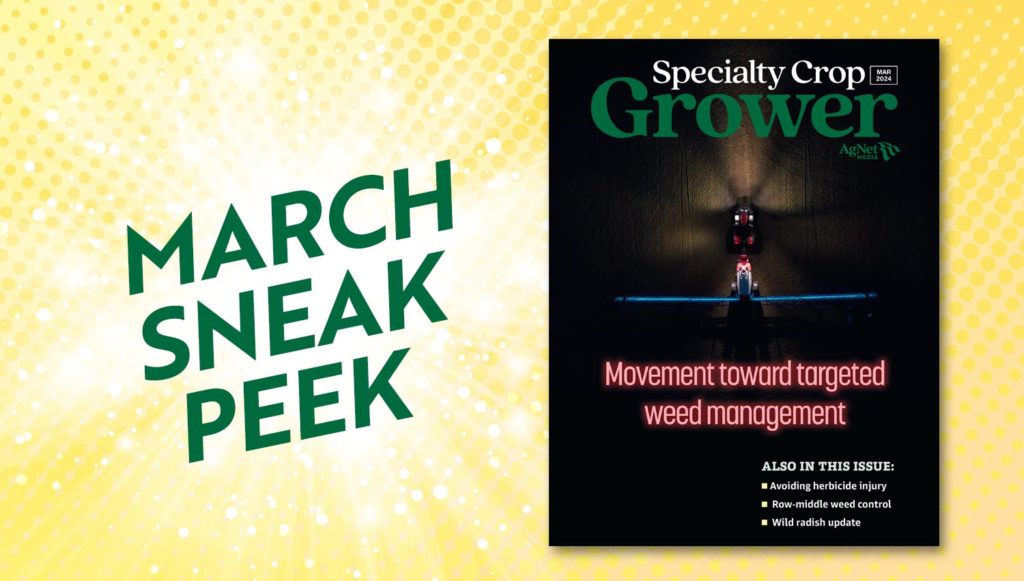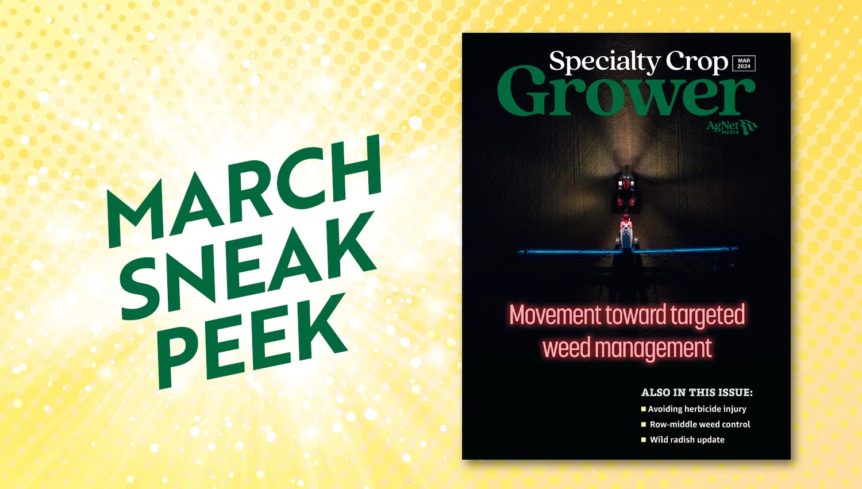
The March issue of Specialty Crop Grower Magazine puts weed management in the spotlight. Amid concerns over a lack of a dependable workforce and need to reduce input costs, growers need to be more efficient in their production strategies like weed control.
Nathan Boyd, weed scientist with the University of Florida Institute of Food and Agricultural Sciences (UF/IFAS), along with Arnold Schumman, UF/IFAS professor of soil and water science, are helping growers with targeted spray equipment, implementing a system that targets weeds only and leads to reduced herbicide use. RGB cameras detect and identify the weeds, while a spray controller applies herbicides only where the weeds are located. It can reduce herbicide costs by as much as 78%.
Speaking of weed control, a University of Georgia weed scientist provides information pertaining to wild radish, specifically its emergence period. Stanley Culpepper said the wild radish is no longer a late fall-and winter-emerging plant. It emerged over an 11-month period during 2023 in South Georgia. This allowed it to compete with most horticultural and agronomic crops.
While herbicide applications are a vital part of a weed management program, producers should be wary that herbicides can also negatively impact their crops. Culpepper discussed the importance of preventing herbicide carryover from one cropping system to the next. It can impact a crop’s yield potential.
Ramdas Kanissery, UF/IFAS assistant professor, focused on the importance of controlling weeds in the row middles in vegetable plasticulture systems. Weeds in the row middles can still compete with the main crop while hosting pests, nematodes and pathogens.
There is also a recap of the Southeast Regional Fruit and Vegetable Conference that was held in Savannah, Georgia, in early January.










